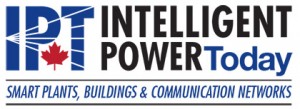Integration with Fault Location Systems: Enhancing Ground Fault Protection
Ground Fault Protection (GFP) systems are crucial for safeguarding electrical networks by detecting and isolating circuits experiencing leakage currents (ground faults). However, once a ground fault is detected, quickly identifying its precise location within a complex network becomes critical. This allows for targeted repair efforts, minimizing downtime and associated productivity losses. The integration of GFP systems with fault location systems offers a powerful solution for pinpointing the location of ground faults with greater accuracy and speed. This article explores the benefits of this integrated approach and examines various fault location techniques.
Advancing Ground Fault Detection
Ground fault protection systems are crucial for detecting abnormalities in electrical networks. Integrating these systems with advanced fault location technology enhances their functionality and efficiency.
Precise Fault Identification
Fault location systems use advanced algorithms and signal processing techniques to accurately pinpoint the location of ground faults, which is essential for rapid response and repair.
Minimizing System Downtime
Quickly identifying and resolving ground faults reduces system downtime, a critical factor in maintaining the operational continuity of essential services and industries.
Technical Benefits of Integration
The amalgamation of ground fault protection and fault location systems brings several technical benefits, streamlining the process of fault detection and resolution.
Enhanced Diagnostic Capabilities
Integration provides comprehensive diagnostic tools, allowing technicians to understand the fault characteristics and address the root cause more effectively.
Real-Time Monitoring and Analysis
Combining these systems facilitates real-time monitoring and analysis of the electrical network, leading to proactive management and maintenance of the infrastructure.
Improved System Reliability
By enabling faster and more accurate fault detection and resolution, the integrated system significantly enhances the overall reliability and safety of the electrical network.
Operational Considerations
Implementing an integrated ground fault protection and fault location system requires careful consideration of various operational aspects.
System Complexity and Training
The complexity of integrated systems necessitates specialized training for personnel to effectively manage and utilize these advanced tools.
Infrastructure and Compatibility
Ensuring that existing infrastructure is compatible with integrated systems is vital, often requiring upgrades or modifications to existing electrical networks.
Cost-Benefit Analysis
While the initial investment in integrated systems can be substantial, the long-term benefits of reduced downtime and maintenance costs often justify the expenditure.
Future Trends and Innovations
The field of ground fault protection and fault location continues to evolve, with ongoing research and development leading to innovative solutions.
AI and Machine Learning Integration
Incorporating artificial intelligence and machine learning can further enhance the accuracy and efficiency of fault detection and location systems.
Advanced Communication Technologies
Leveraging advanced communication technologies ensures seamless data transfer and system integration, facilitating more coordinated and efficient fault management.
Sustainable and Resilient Design
Future systems are expected to focus on sustainable and resilient design principles, ensuring that they can withstand and adapt to changing environmental and operational conditions.
The integration of ground fault protection systems with fault location technology represents a significant step forward in electrical network management. This synergy not only enhances the ability to quickly identify and address ground faults but also contributes to the overall reliability, safety, and efficiency of electrical systems. As technology advances, the continued innovation in this field promises even greater improvements in fault management, ultimately leading to more resilient and dependable electrical networks.
